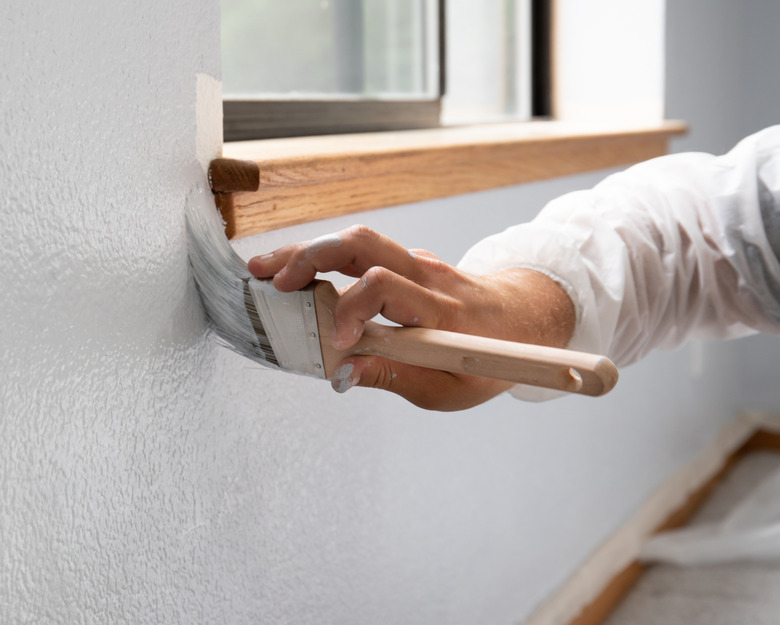How To Clean Paint Off Screens
We may receive a commission on purchases made from links.
Even if you take your time taping off your screens, accidents happen, and you might discover a stray drip of paint here and there. Catching the paint splashes early while they're still wet is the best-case scenario, but, with a little more work, you can also get off dried paint and still save the screen. Strong detergents and solvents can help to clean the window screens, but they can also soften the screen material, so it's always best to start gentle and work up to stronger chemicals if necessary.
Things Needed
-
Absorbent cloth
-
Disposable gloves
-
Kitchen scrubber
-
Isopropyl alcohol
-
Paintbrush
-
Garden hose
How to Clean Paint Off Screens
How to Clean Paint Off Screens
Several options can work for cleaning paint off of screens. Always handle chemicals carefully and follow the instructions precisely to keep yourself safe and get the best results.
1. Remove the Screen
Take the screen off the window if you prefer to clean it flat. You can clean the paint off the screen while it's in place, but if you press too hard, you might pop the screen off the window anyway. Look for tabs, pins, or latches that release the screen and tilt the screen once you release the mechanism.
2. Blot Off Wet Paint
Blot up any fresh paint using an absorbent cloth. If you can, support one side of the screen with a cloth while you blot from the other side. Avoid wiping—you'll just spread paint over a wider area and make removal more difficult.
3. Prepare Trisodium Phosphate
Mix a solution consisting of 1/2 cup of trisodium phosphate per gallon of warm water. TSP is a strong detergent that can remove paint, but it's caustic, so wear rubber gloves and goggles while using it. It can also hurt plants, so water nearby plants and choose a calm, wind-free day to use it.
4. Wash the Screen With TSP
Soak a kitchen scrubber in the cleaning solution and wash the screen. To make it easier to scrub, support one side of the screen with a rag while you scrub the other side. In most cases, you'll be able to remove most of the paint this way, but if not, a solvent is the next cleaning agent to try.
Tip
Avoid rubbing the screen with paper towels or cotton balls. Small bits of cotton or paper get lodged in the screening and can be difficult to remove.
5. Try Isopropyl Alcohol or Lacquer Thinner
Dampen a rag with isopropyl alcohol to remove dried latex paint; use lacquer thinner if you're trying to remove oil-based paint. Support one side of the screen while you rub the other with the rag. Keep the rag damp, but not moist, and rub in two- or three-second spurts to avoid saturating the screen material with solvent and possibly damaging it. Each time you stop, let the solvent evaporate before continuing.
Warning
Wear a respirator when using alcohol or lacquer thinner, and avoid open flames.
6. Use Paint Stripper If Necessary
Use paint stripper as a last resort, keeping in mind that it may damage the screen. Test it on a spare sample of the screen material, if you have one. Spread it on the paint with a paintbrush, leave it for about five minutes, then wash it off with a garden hose. Wipe the screen with a clean rag to remove stripper and paint residue.
Tip
Caustic paint strippers can burn your skin or irritate your lungs. Solvent paint strippers can also cause severe skin irritation or blisters. Soy- or citrus-based products are generally less toxic, but they can still cause skin irritation. They work more slowly, but they're also less likely to damage the screen.
